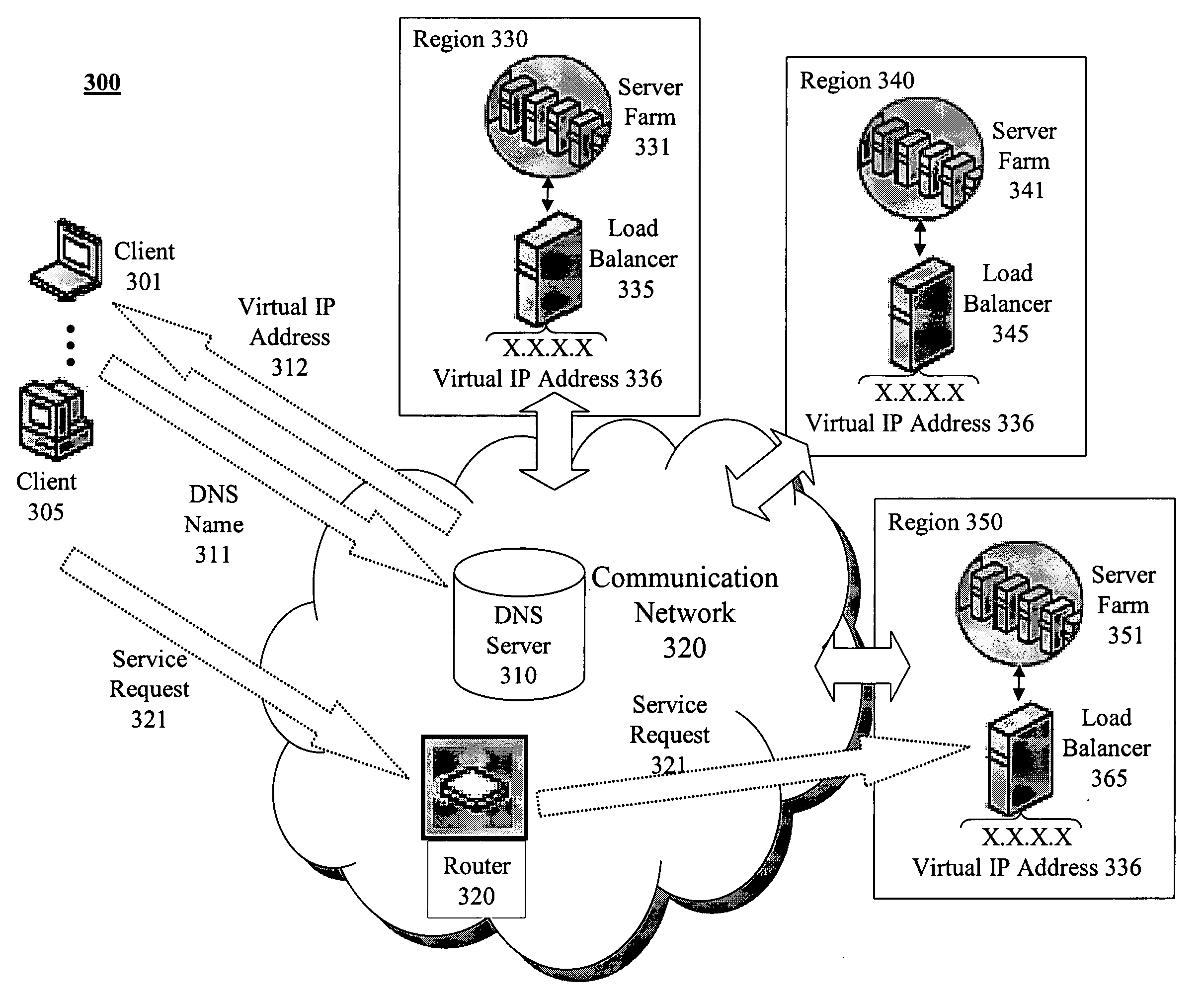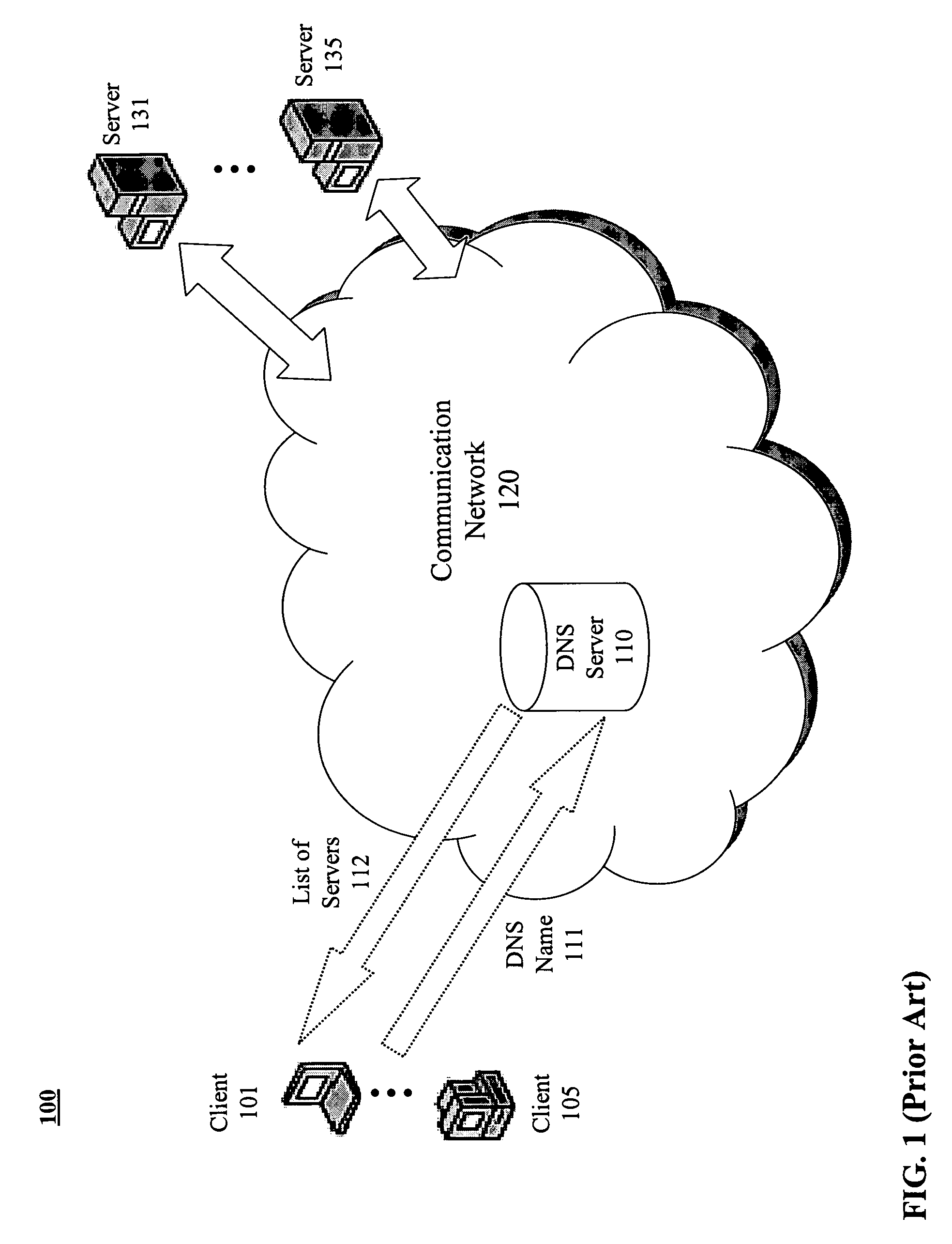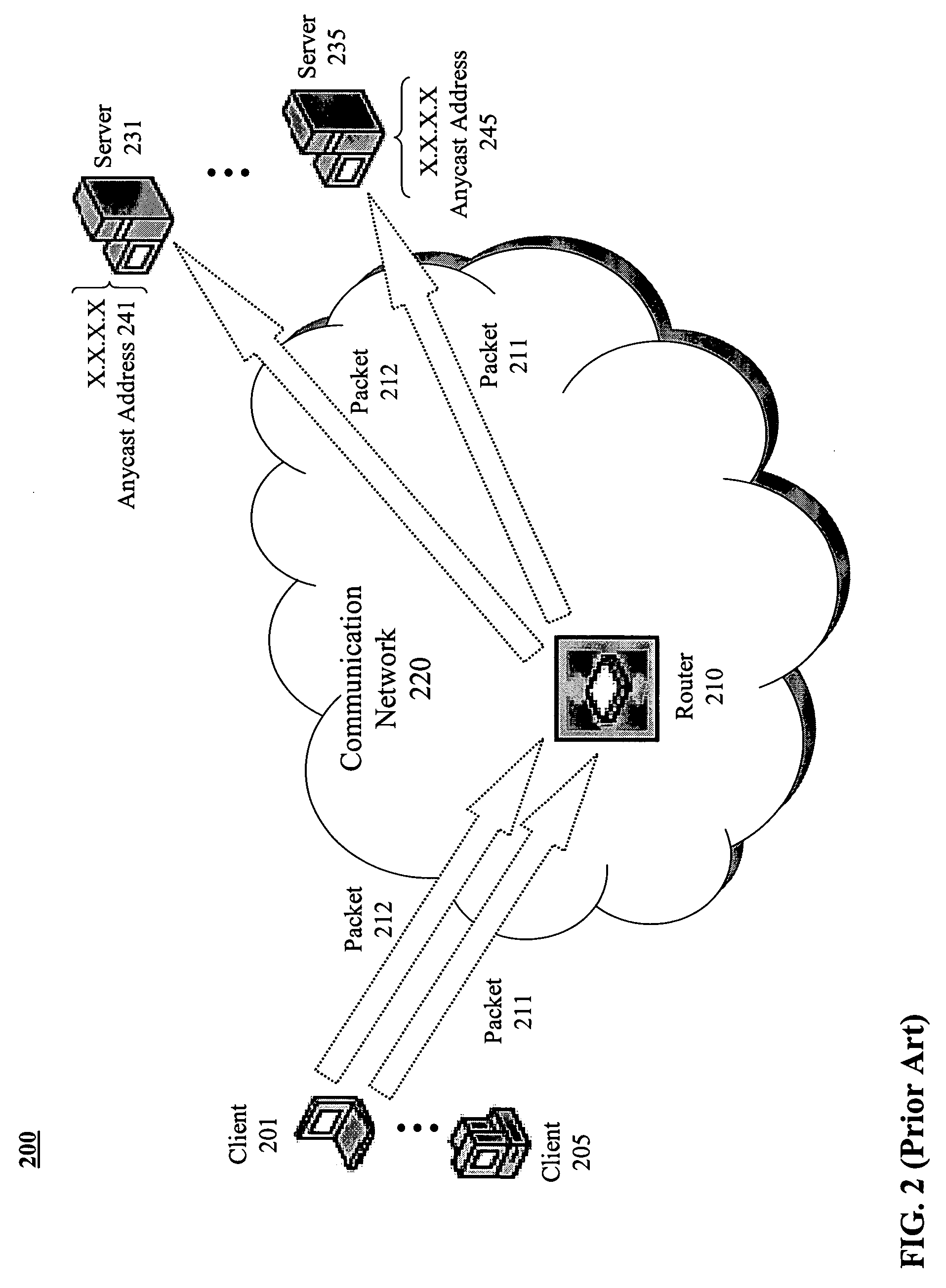Geo-locating load balancing
a load balancing and geo-location technology, applied in the field of load balancing, can solve the problems of limited round-robin dns and flow-based load balancing, scalability issues, and failure to ensure that traffic continues
- Summary
- Abstract
- Description
- Claims
- Application Information
AI Technical Summary
Benefits of technology
Problems solved by technology
Method used
Image
Examples
Embodiment Construction
[0025] Methods and apparatus are described for geo-locating load balancing. Broadly stated, embodiments of the present invention seek to provide a mechanism for directing geographically dispersed clients to the “closest” feature servers without previously determining their locations and then balancing the load across the closest feature servers. According to one embodiment, a method is provided for establishing a session for a Voice over IP (VoIP) call. A voice client coupled to a communication network issues a Session Initiation Protocol (SIP) Register message to an Anycast address serviced by multiple proxy servers coupled to the communication network. The SIP Register message is received by the proxy server determined to be closest to the voice client based on metrics associated with the communication network. The closest proxy server then causes the SIP Register message to be directed to a particular registrar server of multiple registrar servers associated with the proxy server...
PUM
 Login to View More
Login to View More Abstract
Description
Claims
Application Information
 Login to View More
Login to View More - R&D
- Intellectual Property
- Life Sciences
- Materials
- Tech Scout
- Unparalleled Data Quality
- Higher Quality Content
- 60% Fewer Hallucinations
Browse by: Latest US Patents, China's latest patents, Technical Efficacy Thesaurus, Application Domain, Technology Topic, Popular Technical Reports.
© 2025 PatSnap. All rights reserved.Legal|Privacy policy|Modern Slavery Act Transparency Statement|Sitemap|About US| Contact US: help@patsnap.com



